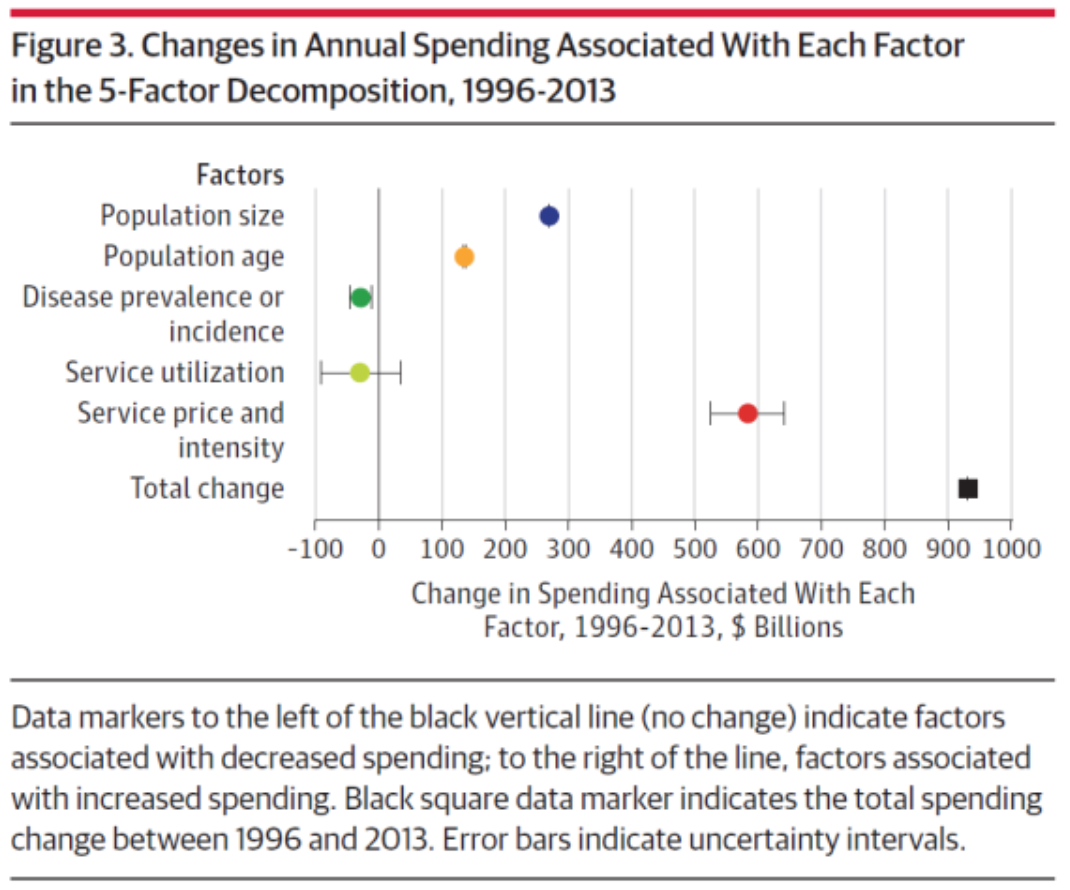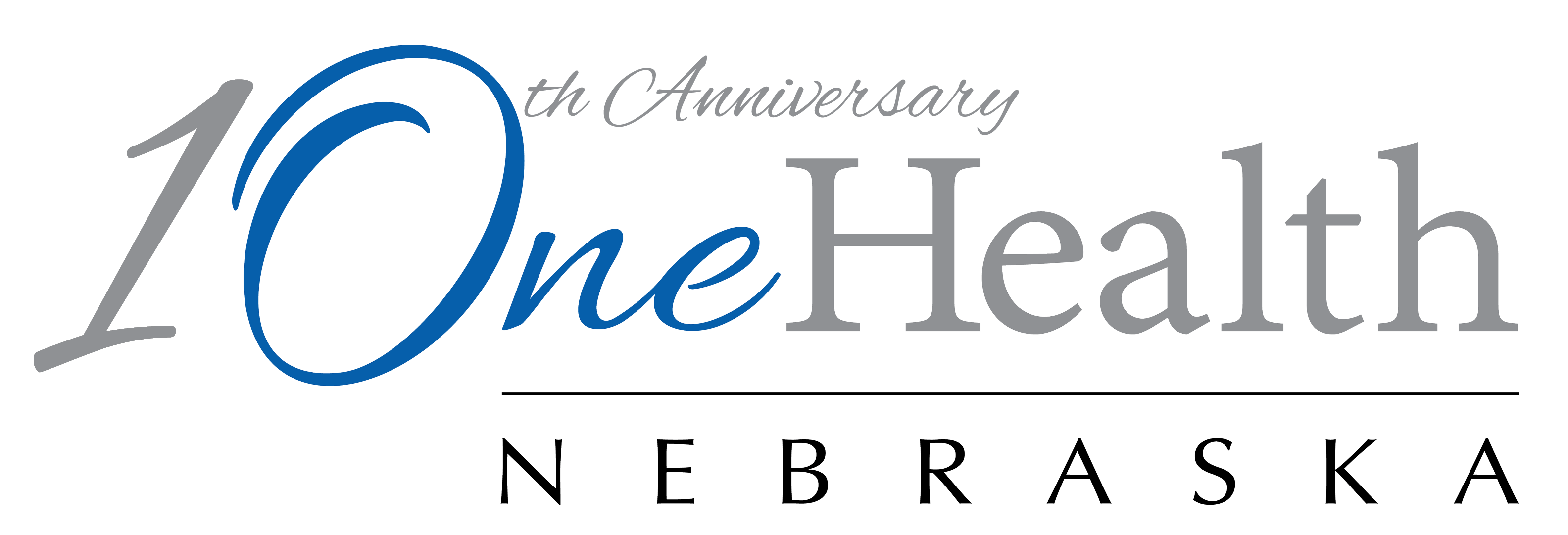A recent article in the Journal of the American Medical Association looked at what is driving the increase in healthcare costs from 1996-20013. The short version, it’s mainly prices that are driving the increase. Pundits and special interests each like to point at various scapegoats, but the article by Joseph Dielman and colleagues looked at the 5 factors that drive healthcare costs and compared each to the total change.
- Population size
- Population age
- Disease prevalence and incidence
- Service utilization
- Service price and intensity
This image puts each into context:

Looking into each of the 5 factors show some caveats worth discussing. First, some of the cost increase comes from a growing population. No surprise there. Second, some of the cost increase comes from a population that is aging. That’s a good thing! More of us surviving to old age even though it raises healthcare spending is something to be happy about! We don’t die as much from heart attacks, our cataracts are fixed so we don’t go blind, and our knees get replaced so we can stay mobile. I’m okay with this driving up healthcare costs a little.
Factor number three deserves a bit more discussion. The incidence of diseases overall has actually dropped a little but there are 2 competing things happening here. The incidence of heart disease is down, likely due mainly to the multi-decade drop in smoking. This could have led to a major “smoking reduction dividend” where our overall healthcare costs would have been lower and our life expectancy would have shot up if not for another competing problem that offset all of it. That would be the epidemic of physical inactivity and obesity. All the gains we would have seen from the reductions in smoking have unfortunately been offset by all of the health consequences resulting from our lack of exercise and sugar consumption. This has tripled the number of Americans with Type II Diabetes which is now responsible for 10-20% of employer healthcare costs.
Factor number four is also an important area to understand. Healthcare costs are not rising because people go to the doctor too much. If anything, Americans go to the doctor less often than in other countries. The idea that we need high copays and deductibles to prevent patients from overusing healthcare is wrong. It is based on the assumption that people love to use healthcare and need disincentives and some “skin in the game” so they don’t abuse the system. This may happen occasionally but is not major factor in healthcare costs. Think about it. Is healthcare something we all enjoy using? Most of us have better things to do than waste an afternoon in a doctor’s office waiting room. Patients aren’t going to get more mammograms and colonoscopies because they are free. Healthcare isn’t as fun as beer and pizza, which would get overused if they were made free. The real problem of patients overusing things and getting unnecessary tests comes from those in healthcare that incessantly market and fool people into thinking they need unnecessary healthcare.
The real problem that drives US Healthcare costs is the prices we are charged for almost everything, the subject of next week’s blog post. Stay tuned☺.
Bob Rauner, MD, MPH, Chief Medical Officer, OneHealth Nebraska ACO


